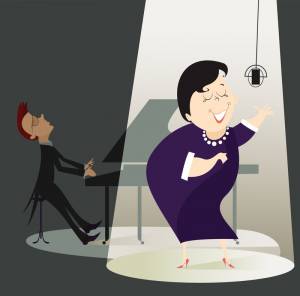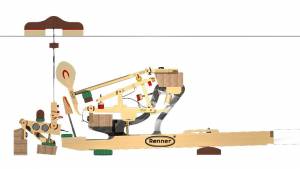 A piano pupil I have been teaching for a little while now, but still a relative beginner expressed in a recent lesson that legato playing is REALLY difficult. We have worked on this aspect of playing with many exercises and while not yet settled, legato playing has got much better for this pupil.
A piano pupil I have been teaching for a little while now, but still a relative beginner expressed in a recent lesson that legato playing is REALLY difficult. We have worked on this aspect of playing with many exercises and while not yet settled, legato playing has got much better for this pupil.
The way this particular pupil expressed his feeling about legato playing being REALLY difficult has somewhat stuck in my mind. However it is something as pianists we really do have to be acutely aware because of the nature of the instrument.
Let’s take a step back here. That word Legato literally means connected and the notes should follow on to another smoothly without gaps or silences. It must be constant in sound and tone. If we sing a scale on a vowel, the voice will naturally produce a pure legato. By continuously breathing out as the pitch changes, you will notice that the sound does not stop.
This constant stream of air is of course available to singers and wind players and as long as there is air in the lungs so that the sound can remain constant and uninterrupted. It is similar for string players. If the bow remains in contact with and moving across the strings, then legato is maintained. For singers, wind and string players, legato is easy and a very natural part of playing.
Legato on the piano is not so easy because the instrument is not really capable of a true legato. If you think you hear a legato, it is arguably an illusion. The piano being a percussive instrument prevents legato, the pianists strikes a key and then a hammer via the piano action then strikes the string.
The problem with the piano is that it is an instrument of decay and the tone produced from the strings when struck by the hammer immediately start to decay. It is possible to produce the illusion of legato at the piano when joining a keystroke to the next, which is one of the fundamental problems in piano technique. Development of a good legato technique is of great importance.
The basic components of legato at the piano are…
- Timing! A sounded key is released when the next one in the sequence is depressed and at the very same time not leaving a gap between the sounds. This requires very carefully chosen fingerings, often includes coordination from the wrist and arm and also, importantly, very careful listening. The basic principle becomes second nature with ample practice, but pianists are always working to refine their motion and timing toward a better legato.
- Grading Pressure on the Keys. An important part of the illusion of legato is managing the force with which the keys are pressed. If we sing the phrase in a comfortable part of the voice, no note is going to be noticeably louder or softer than the others, because the air stream is kept constant by breath control. In playing the same phrase on the piano, which is a series of percussive events, we have to work carefully to make sure that no note sticks out inappropriately. We do this by listening closely and making split-second judgements about how hard to press the next key in a sequence based on the decay of the previous sound, blending notes together into a phrase. If the phrase in question requires a cresc or dim, that of course must also be factored in.
Evenness in finger strength is crucial as is a well-maintained piano. Pianos with unreliable or inconsistent key or hammer action make legato playing much more difficult than necessary.
 The sustain pedal is also part of legato playing, but the pedal must not be a substitute for finger legato except in very special circumstances as required by the music and should never be a substitute for proper finger technique. This is a common problem in piano playing, one which we all struggle from time to time. Don’t be afraid to use the pedal it is a very effective tool when used sensitively but do guard against creating a habit of using the pedal to hide deficiencies in fingering. One wise teacher once told me to pedal with my ears! Perhaps in the context of this discussion the whole of piano playing is with our ears!
The sustain pedal is also part of legato playing, but the pedal must not be a substitute for finger legato except in very special circumstances as required by the music and should never be a substitute for proper finger technique. This is a common problem in piano playing, one which we all struggle from time to time. Don’t be afraid to use the pedal it is a very effective tool when used sensitively but do guard against creating a habit of using the pedal to hide deficiencies in fingering. One wise teacher once told me to pedal with my ears! Perhaps in the context of this discussion the whole of piano playing is with our ears!
A consistent legato is difficult to achieve on the piano and is a lifelong journey. We all have to work to refine the physical motions using critical listening for the endeavour.
There are varying types of legato which is too complicated to discuss here, that’s a discussion for another day…



Add Comment